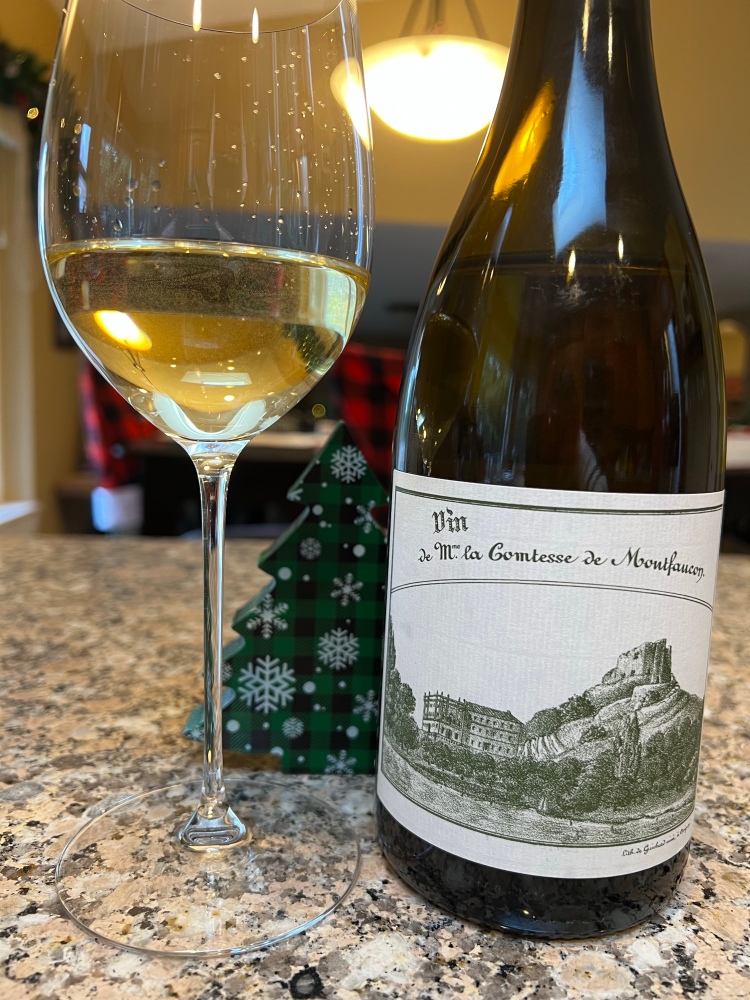
Clairette is an ancient white grape from Southern France dating back as far as the 15th century. It is commonly used in blended wines with different grapes such as Vermentino, Ugni Blanc, Terret, Grenache Blanc, Roussanne, and even some red blends, depending on the region it is being cultivated in. In addition to making dry still wines, Clairette can also be used in the production of sparkling and sweeter dessert wines. One reason Clairette is so versatile is because, if harvested at the ideal time, it produces crisp, acidic wines. The acid can be used to add balance to heavier, fuller bodied wines, to balance additional body from lees contact during the production of sparkling wine, or to balance the sugar in sweet style wines. Clairette can also be made into a single varietal wine, but these are less common.
This week, with the assistance of my local wine shop, I found a bottle of 2017 Vin de Madame la Comtesse de Moutfaucon. This wine was 99% Clairette and 1% Grenache Blanc. The Clairette vineyard was planted on the hillside of Mt Peiguerol prior to 1870. According to the back of the bottle, the front label was created in 1829 for the Baron of Moutfaucon, an ancestor of the current owner and winemaker at Château de Moutfaucon Rodolphe de Pins. The label depicts the old feudal castle before its restoration. The wine was a pale green lemon color with steely highlights and watery legs. Aromas of crisp green apples, fresh lemon rind, ripe pineapple, wet rock, buttered bread, and toasted coconut were detectable on the nose. This dry, medium bodied wine had a pronounced acidity and moderate level of alcohol. It led with notes of coconut, lemon pith and buttered toast on the palate that acquiesced to white pear and crisp minerality, both of which lingered and were joined with fresh concrete, green apple and slightly underride pineapple on the prolonged finish. This wine exhibited unexpectedly fresh and bright character considering its 5 years of age and contact with oak. Looking forward to tasting this wine as it continues to age and increase in complexity.
-TheLooseTannin